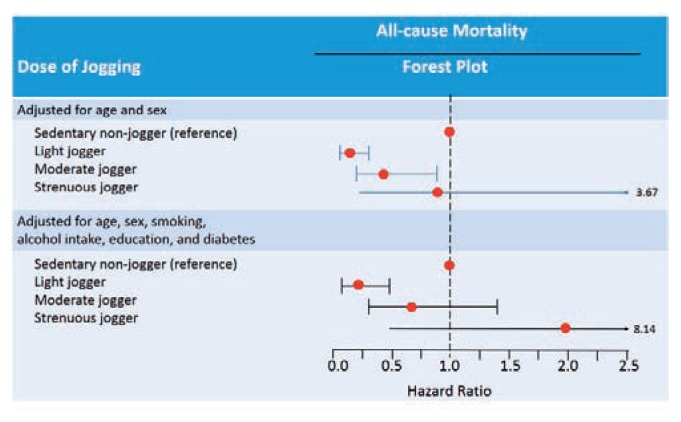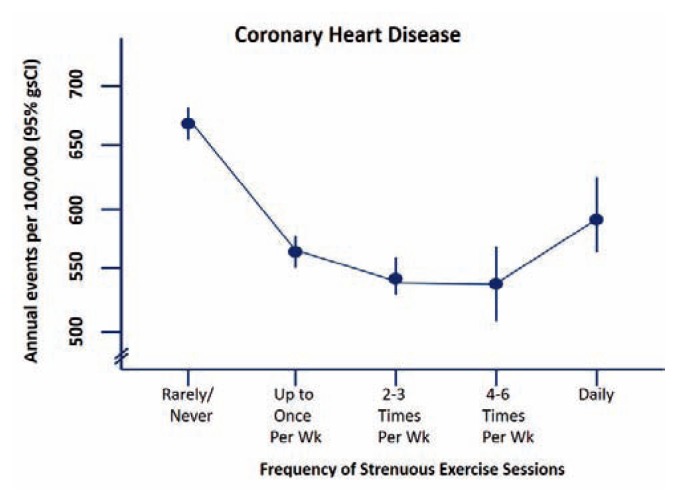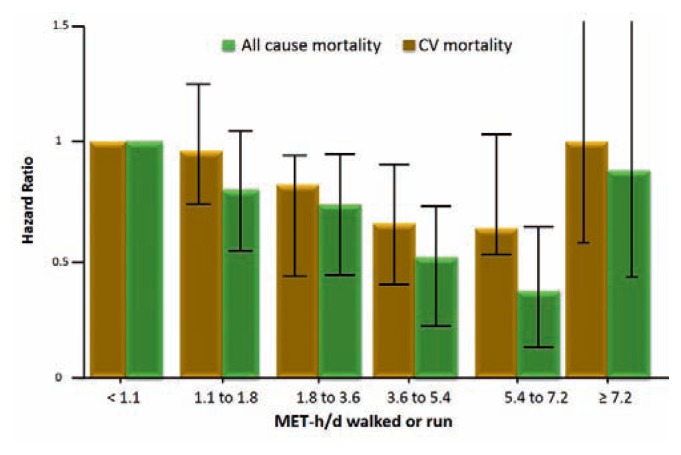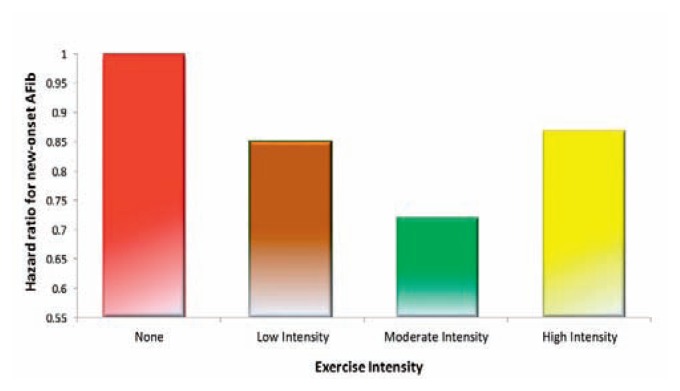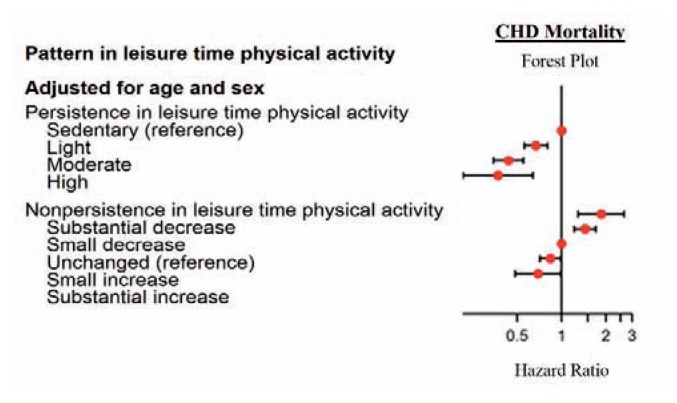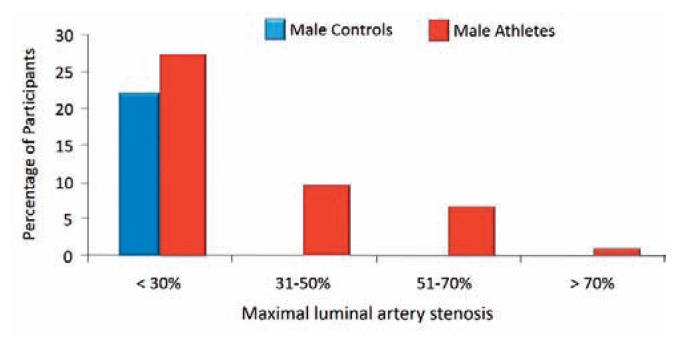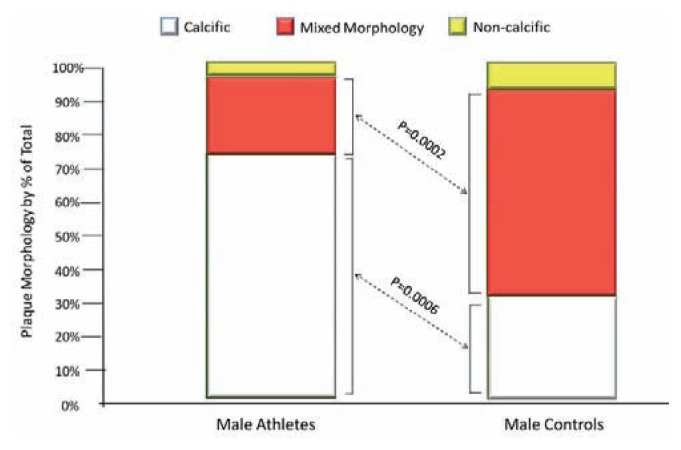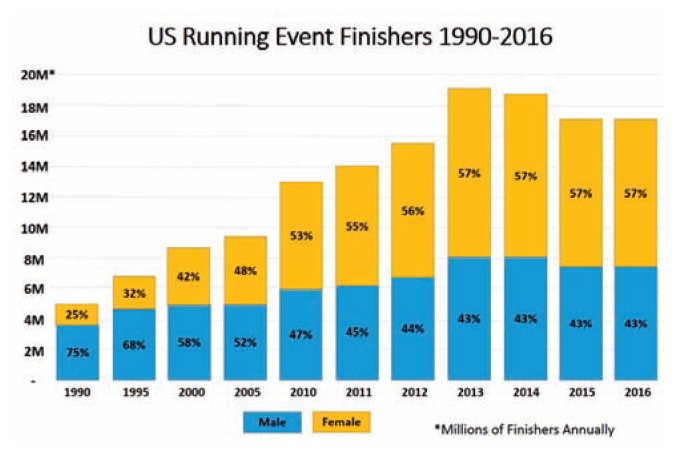Abstract
Homo sapiens are evolutionarily adapted to be very physically active throughout life, and thus habitual physical activity (PA) is essential for well-being and longevity. Never the less, middle-aged and older individuals engaging in excessive strenuous endurance exercise appear to be at increased risk for a variety of adverse cardiovascular (CV) effects including atrial fibrillation, myocardial fibrosis, and coronary atherosclerosis. An emerging body of evidence indicates U-shaped or reverse J-shaped curves whereby low doses and moderate doses of PA significantly reduce long-term risks for both total mortality and CV mortality, however, at very high doses of chronic strenuous exercise much of the protection against early mortality and CV disease is lost. The optimal dose, or what we term ‘Goldilocks Zone,’ of PA may be: at least 150 minutes per week of moderate-intensity aerobic exercise or 75 minutes per week of vigorous-intensity aerobic activity, but not more than four to five cumulative hours per week of vigorous (heart-pounding, sweatproducing) exercise, especially for those over 45 years of age. It is also important to take at least one day per week off from vigorous exercise. There appears to be no concerns about an upper threshold for safety for leisure-time low-to-moderate intensity activities such as walking at a comfortable pace, housework, gardening, etc. After every 30 consecutive minutes spent sitting, stand up and move, ideally walking briskly for about five minutes.
Introduction
Exercise may be best understood as a medicine with potent benefits, particularly for the CV system. As with any powerful drug, establishing the ideal therapeutic window is of crucial importance. An ineffectively low dose will not impart full benefits, whereas the adverse effects stemming from an excessively high dose may overshadow potential benefits and introduce detriments. A lifelong habit of incorporating PA into one’s daily routine is essential to a lifestyle ideal for conferring well-being and longevity.1 Middle-aged and older individuals engaging in excessive strenuous endurance exercise appear to be at increased risk for a variety of adverse effects—mostly CV in nature.1–18 These adverse CV consequences of chronic excessive endurance exercise have been noted in humans as well as in animal models.19, 20
Exercise for Longevity
A broad range of PA has salutary effects on many CV risk factors, including lowering resting heart rate and blood pressure (BP), improving lipids and glucose, normalizing body mass index (BMI), reducing emotional stress, improving sleep, and encouraging other healthy lifestyle choices, such as following a nutritious diet and avoiding tobacco.12, 13, 17 Daily exercise and cardiorespiratory fitness (CRF) are also linked to lower inflammatory markers.21
Large long-term epidemiological studies have consistently reported that regularly undertaking PA and maintaining good physical fitness are among the most effective habits for improving life expectancy.5–11, 14, 18 The consensus emerging from an extensive body of observational data indicates that a routine of regular exercise is associated with an increase in life expectancy by up to six years.5, 9–13, 15–17 By comparison, if medical science discovered how to cure and/or prevent all cancer, the average life expectancy in the United States (US) would rise about 3.5 years.22 If scientists were able to eliminate all CV deaths, life expectancy would rise approximately seven years.22 Thus, a lifelong habit of effective PA is clearly one of the most effective approaches for enhancing longevity and public health.23–26
In the past five years, a number of large and scientifically rigorous observational studies have reported that performing as little as 50 minutes per week of strenuous exercise, such as jogging, will bestow near maximal improvement in life expectancy related to PA.5–7, 9–12, 15–17 The improvement in longevity plateaus with running one to two times per week for a cumulative distance of five to six miles.9, 15 Paradoxically, running distances longer than approximately 30 miles per week appears to significantly attenuate the boost in life expectancy noted with more moderate doses of exercise.14, 17, 18, 24, 27, 28
The U-Curves of Strenuous Endurance Exercise
The lion’s share of studies focusing on the topic of exercise dose and life expectancy report U-shaped or reverse J-shaped associations for vigorous PA and risk of mortality during follow up.29 The recurring pattern is that low doses and moderate doses of vigorous exercise significantly reduce long-term risks for both total mortality and CV mortality.5–7, 9–11, 13–18 The majority of high-quality prospective epidemiological studies on this issue report that the cohort of people who chronically log very high doses of vigorous PA appear to lose most or all of the protection against early mortality and CV disease that was apparent in cohorts attaining low or moderate doses of vigorous exercise.5–11, 13–18, 24, 25, 27, 28
Cardiac overuse injury is an insidious syndrome in which excessive strenuous exercise can progressively precipitate CV damage. Many long-term endurance athletes have personal experience with orthopedic overuse injuries—stress fractures, patellar chondromalacia, Achilles tendonitis, shin splints, plantar fasciitis, etc. Correspondingly, endurance athletes can also develop cardiac overuse injuries such as atrial fibrillation (AF), ventricular ectopy, severe bradycardia, coronary atherosclerosis, premature aging of the heart, fibrosis of the atrial and ventricular walls, and rarely even sudden cardiac death (SCD).2–4
Data generated from the long-term prospective Copenhagen City Heart Study found that both male and female runners have life expectancies that are approximately six years longer than physically inactive non-runners.15–17 Yet the individuals subjecting themselves to the highest doses of running, typically more than three running sessions per week, at a faster pace, for a longer duration of time (mean of > 4 hours of running per week), lost the improvement in life expectancy that was observed in the groups doing low or moderate doses of running (Figure 1).16, 17
Figure 1.
Forest plot indicating all-cause mortality in light, moderate, and strenuous joggers compared with sedentary nonjoggers.17
Similarly, the Million Women Study6 reported that among a sizeable cohort of adult females from the United Kingdom (UK), those women who regularly completed a heart-pounding, sweat-producing workout one or more times per week had significantly reduced risks for coronary heart disease (CHD) events, venous thromboembolism, and cerebrovascular disease.6 However, the cohort of females who did take one or more days off each week from strenuous exercise lost a substantial degree of conferred protection against CV diseases (Figure 2).6 Another massive epidemiological study5 reported that PA markedly reduced the mortality among those doing moderate doses of exercise, with the familiar reverse J-curve indicating partial loss of protection among the cohort doing the highest dose of exercise.
Figure 2.
Absolute risks and 95% confidence intervals for CV events.6
The small sample size of the cohort performing the very high doses exercise typically causes the upturn at the far end of the reverse J-curve or U-curve to be not statistically significantly different from the nadir. Tellingly, this partial or complete loss of long-term health benefit tends to be statistically significant in studies comprised of very large numbers of study participants. For instance, among the 1.1 million females in the UK study, there were 35,000 women (3.2%) who performed strenuous exercise seven days each week; their risks of CHD, stroke, and venous thromboembolism were statistically significantly higher than the females in the study who each week took one or more days off during which they abstained from vigorous exercise.6 In studies comprised of populations at higher risk, such as those with known CHD disease at baseline, the exercise-related benefits in life expectancy and CV health were again significantly decreased among the very high-dose PA cohort compared to the moderate-dose PA cohort (Figure 3).18
Figure 3.
For patients after a cardiac event, running and/or walking reduce risks for all-cause mortality and CV mortality, however these benefits are lost at the highest levels of exercise, which is equivalent to running: more than 7.1 km/day or walking briskly more than 10.7 km/day.18
Veteran endurance athletes have approximately a five-fold higher incidence of AF compared with sedentary individuals.30 Despite solid evidence that a routine of moderate exercise decreases risk of AF,31 with excessive strenuous exercise the AF risk rises dramatically, particularly for persons older than age 45 years (Figure 4).31
Figure 4.
Relative risk of new-onset AFIB among men > 65 years old. The exercise-induced reduction in AFIB was attenuated in the cohort doing chronic strenuous exercise.31
The Physical Activity Guidelines (PAG) for Americans, published by the Center for Disease Control (CDC), advise at least 150 minutes per week of moderate-intensity aerobic exercise, or 75 minutes per week of vigorous-intensity aerobic activity; at least half (and perhaps as high as 70–80%) of the US adult population fails to reach this exercise goal.2–4, 12 On the other hand, only 2.5% of the population appears to be overdoing exercise.13, 14 To put this problem in perspective, approximately 20 people are not meeting the CDC PAG for every one person who is excessively exercising.2, 12
No U-curves for Light and Moderate Leisure Time PA (LTPA)
Recent studies of tribes still following the indigenous hunger-gatherer lifestyles demonstrate high levels of activity throughout the day, with individuals often sitting for just two to three hours during their waking daytime routines.21, 32 These people typically reach 16,000 steps per day—roughly three times the average number of steps taken daily by American adults. The activity levels of these native people is nearly all done in light and moderate ranges of intensity.21, 32, 33 These individuals following our ancestral lifestyle stayed physically active into middle age and beyond, with the 70-year-old elders often moving as much as the adolescent tribes-people. Notably, both of these modern day hunter-gatherer tribes had remarkably robust health, and virtually no CV disease.21, 32
In contrast, studies show that typical US adults sit about 10 hours out of an average 16 waking hours per day. A recent methodologically rigorous study reported that multivariate-adjusted risk of death increased in proportionally with total sitting time.34 Both the total amount of sitting time and its accumulation in sustained uninterrupted bouts were significantly correlated with total mortality. Individuals who sat for less than 30 minutes at a time had the lowest risk of premature mortality.34
The Copenhagen City Heart Study recently reported that LTPA reduces both total mortality and CHD mortality (Figure 5).1, 25 Compared to the sedentary cohort, mean life expectancy gains were: 2.8 years for the light PA cohort, 4.5 years among the moderate PA cohort, and 5.5 years for the high PA cohort. The highest level of overall PA in that study still paled in comparison to the excessive strenuous activity range noted in above-mentioned studies (which were mostly comprised of runners), thus no evidence for a U-shaped relationship was seen in the study of leisure time activities.5–11, 13–18 In other words, more is better when it comes to staying active in leisure time with light and/or moderate PA, such as gardening, walking, or housework, and active play such as golf, racquet sports, bowling and dancing.
Figure 5.
Persistence and non-persistence in leisure time physical activity for the 12,314 CCHS participants. Risk of all-cause mortality in fully adjusted Cox proportional hazards regression analysis.1
Regular exercise increases life expectancy in part by improving physical fitness, especially CRF. In fact, the level of cardiorespiratory fitness predicts survival better than does the amount of exercise performed.35, 36 Similarly, for overweight or obese individuals, physical fitness is an important predictor of longevity, whereas weight loss is not.37 Maintaining a physically active lifestyle during leisure time improves fitness and bolsters emotional and physical wellbeing for all age cohorts.1
Excessive Endurance Exercise and Coronary Atherosclerosis
In collaboration with Robert Schwartz, MD, et al., we studied the association of decades-long marathon training/racing with quantitative coronary artery plaque volume as assessed by computed tomography (CT) coronary angiography.38 We found that long-term marathon running in men was associated with increased coronary artery plaque development, with significantly greater amounts of both soft (non-calcified) and hard (calcified) coronary artery plaques compared to sedentary controls (Figure 6).
Figure 6.
The quantitative volumes of both calcified and non-calcified coronary plaques were higher in the marathoners than in sedentary controls.38
Other studies show that male marathon runners as compared to sedentary controls have larger amounts of calcified coronary artery plaque as quantitated by CT coronary artery calcium (CAC) scoring.39 The recent CARDIA study, a 25-year long prospective cohort study involving 3,175 individuals, reported that white individuals chronically attaining at least three-fold the exercise suggested by the CDC PAG, as compared to a cohort not meeting the minimum CDC recommended exercise goal, were 75% more likely to have CAC on CT scans.40 In other words, during a quarter century of follow up the individuals performing at least three times the recommended amount of exercise had significantly higher odds of developing subclinical coronary atherosclerosis during middle age than physically inactive individuals.
A recent prospective comprehensive case-control study assessed 152 masters athletes (77% were runners), mean age of 54 years with average of 31 years performing chronic endurance exercise, and compared them to 92 controls matched for age and gender and Framingham 10-year coronary artery disease risk scores.41 Despite a paucity of traditional CHD risk factors in both groups, male endurance athletes were twice as likely as male controls to have a substantial amount of coronary plaque (44% vs 22% of individuals, respectively) (Figure 7). Additionally, the coronary plaques were predominantly calcified in the athletes, as compared to plaques of mostly mixed morphology—with calcified and non-calcified components—in the sedentary men (Figure 8). Whether or not these high exercisers may have stable plaque that is less likely to rupture causing acute CV events is unknown. Notwithstanding, significant myocardial fibrosis as assessed by cardiac magnetic resonance imaging was appreciated in the left ventricle in 15 (14.2%) of the male athletes as compared to none of the male controls (P=0.004).41 Other studies have raised concern about this.42, 43 At present, we agree with Levine’s recent review/editorial that these risks are not substantial enough to justify over-frightening athletes about these risks.44
Figure 7.
Luminal stenoses in male athletes and sedentary male controls.41
Figure 8.
Plaque morphology in male athletes and relatively sedentary male controls.41
The mechanical and metabolic stresses produced by excessive strenuous exercise could play a causal role in accelerated atherosclerosis. Individuals who train and race over very long-distances experience prolonged elevations in heart rate, BP, cardiac output, and atrial and ventricular volumes for up to several hours per day. Strenuous exercise produces large quantities of free radicals, which deplete the buffering capacity of the system after about 50 to 60 minutes of continuous intense exercise.3, 4 Thus, oxidative stress can become problematic after one hour of sustained strenuous exercise, triggering increased atherogenic modification of cholesterol particles, and predisposing to endothelial dysfunction.20 Ultra-endurance exercise also generates a multitude of additional circulatory system stresses including protracted elevations of catecholamines and resultant coronary vasoconstriction, lactic acidosis, prolonged sinus tachycardia that reduces the diastolic filling time of the coronary arteries, alterations in free fatty acid metabolism, and other metabolic derangements.3, 4
These effects noted among some veteran ultraendurance athletes are likely to be playing a causal role in other features of cardiac overuse injury including: myocardial fibrosis, increased stiffness and thickness of the walls of the great vessels as well as the cardiac chambers. A recent study reported that young (< 30 years of age) male amateur runners showed transient stiffening of the aorta and other great vessels immediately following a half-marathon race.41 Strenuous and protracted endurance exercise may also precipitate supply-demand mismatch and demand ischemia, and rarely this can result in myocardial infarction and SCD.41, 45, 46
Conclusions
We Homo sapiens are evolutionarily adapted to have high PA throughout life. Even so, our indigenous lifestyle called for mostly light and moderate PA for most of our waking hours, with only occasional bursts of more strenuous exercise. Low doses and moderate doses of vigorous exercise significantly reduce long-term risks for both total mortality and CV mortality. Of concern, excessive strenuous exercise has been shown in many studies to be associated with increased CV risk for myocardial fibrosis and scarring, potentially dangerous arrhythmias, and accelerated coronary atherosclerosis,3, 4 along with attenuation of longevity benefits noted with less excessive doses of strenuous PA. Accordingly, we suspect that when considering the cumulative PA dose as a spectrum from completely inactive to extremely active, those individuals located on either end of the continuum (sedentary people and those logging excessive doses of strenuous exercise) would reap long-term health dividends by changing their daily routines to get a moderate dose of PA. With respect to cardiac overuse injury, there is likely a large amount of person-to-person variability, with synergistic risk resulting from multiple factors, such as advancing age, genetics, excessive alcohol intake, poor sleep, suboptimal diet, and elevated blood pressure.
Perhaps in part due to accumulating evidence about the potential health risks of excessive exercise, the number of individuals participating in marathons and other strenuous endurance events, after rising dramatically for 40 years, has trended lower over the past six years (Figure 9).47 This downturn coincided with the first publications by us and others about the potential risks of excessive exercise.2–18 In an attempt to promote lifestyles marked by well-being and longevity, it is our hope that people are gravitating towards what we choose to call the Goldilocks Zone of exercise as they become aware of the potential liabilities of excessive endurance efforts. From a pure health standpoint, it is unnecessary to perform vigorous exercise for more than 40–60 minutes. We recognize that some people exercise longer and more intensely than needed for health benefits their motivation including competition, improving sports performance, ego, fun, and camaraderie. Although we try to emphasize the huge health benefits and minimal risks of low and moderate PA/exercise doses, the risks of excessive exercise, although present, may not be high enough to cause competitive athletes or high-dose athletes to abandon their behaviors despite these risks.44
Figure 9.
Annual number of individuals (in millions) who completed running competitions in the US over the past quarter-century.47
The Goldilocks Zone for Physical Activity or Physicians Exercise Prescription.
Aim for the CDC Physical Activity Guideline 150 minutes per week of moderate-intensity aerobic exercise or 75 minutes per week of vigorous-intensity aerobic activity
Try to limit doses of vigorous (heart-pounding, sweat-producing) exercise to not more than 4 to 5 cumulative hours per week, especially for those over 45 years of age.
After 30 consecutive minutes spent sitting, stand up and move, ideally walking briskly for about 5 minutes. Consider a standing desk to reduce prolonged sitting.
Changing from a completely sedentary lifestyle to one that incorporates even a modest amount of PA will confer substantial benefits to mental and physical health.
For individuals performing doses of strenuous exercise above recommended levels, consider substituting less aerobically demanding PA, such as walking, yoga, stability exercises, strength training, etc.
There appears to be no concerns about an upper threshold for safety when performing leisure-time low-to-moderate intensity activities, such as walking at a comfortable pace, housework, gardening, baseball or softball, bowling, volleyball, golf, doubles tennis (and other racquet sports), dancing, croquet, etc.
Take at least 1 day per week off from vigorous exercise.
For very high exercisers over 50 years of age, consideration should be given to some cardiac testing (e.g. CT scanning for CAC, or exercise testing and/or echocardiography.)
Biography
Clockwise, James H. O’Keefe, MD, MSMA member since 2003, is at Saint Luke’s Mid America Heart Institute, Kansas City, Missouri. Evan L. O’Keefe, MS, is in the Ochsner Clinical School, University of Queensland School of Medicine, New Orleans, Louisiana. Carl J. Lavie, MD, FACC, is in the Department of Cardiovascular Diseases, John Ochsner Heart and Vascular Institute, Ochsner Clinical School, University of Queensland School of Medicine, New Orleans, Louisiana.
Contact: jokeefe@saintlukeskc.org
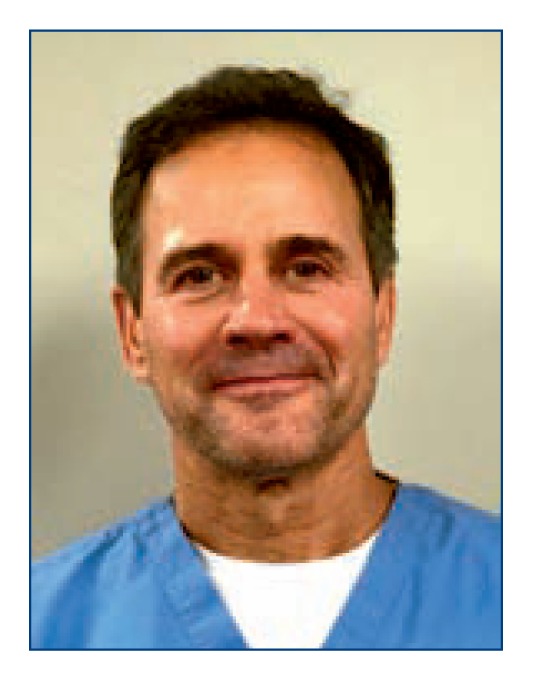
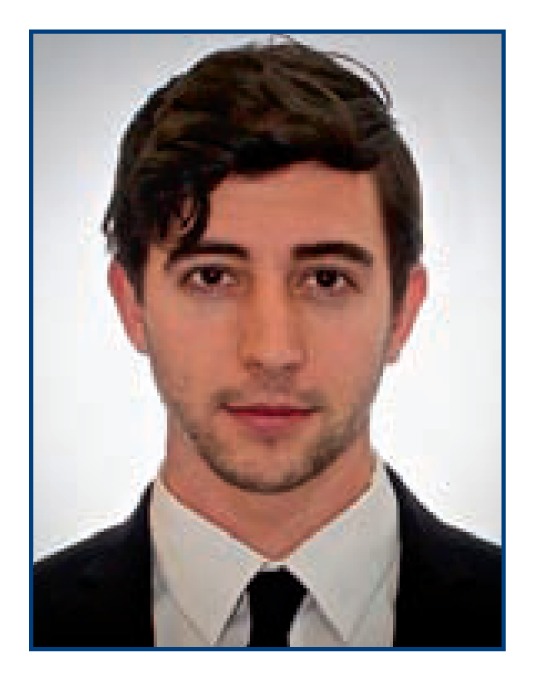
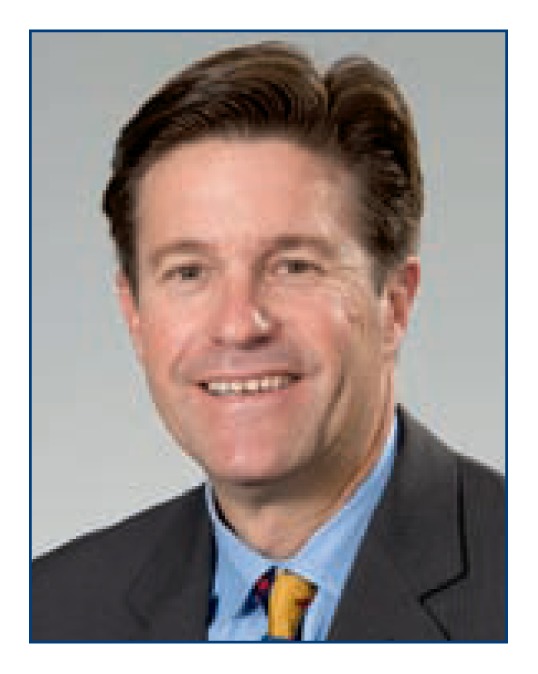
Footnotes
Disclosure
None reported.
References
- 1.Schnohr P, O’Keefe JH, Lange P, Jensen GB, Marott JL. Impact of persistence and non-persistence in leisure time physical activity on coronary heart disease and all-cause mortality: The Copenhagen City Heart Study. Eur J Prev Cardiol. 2017 Jul 21;24(15):1615–1623. doi: 10.1177/2047487317721021. [DOI] [PubMed] [Google Scholar]
- 2.O’Keefe JH, Lavie CJ, Schnohr P. Dosing exercise for longevity: how much is enough and how much is too much? J SC Med Assoc. 2016 Jun-Jul;112:191–196. [PubMed] [Google Scholar]
- 3.O’Keefe JH, Patil HR, Lavie CJ, Magalski A, Vogel RA, McCullough PA. Potential adverse cardiovascular effects from excessive endurance exercise. Mayo Clin Proc. 2014 Jun;87(6):587–595. doi: 10.1016/j.mayocp.2012.04.005. [DOI] [PMC free article] [PubMed] [Google Scholar]
- 4.Patil HR, O’Keefe JH, Lavie CJ, Magalski A, Vogel RA, McCullough PA. Cardiovascular damage resulting from chronic excessive endurance exercise. Mo Med. 2014 Jul-Aug;109(4):312–321. [PMC free article] [PubMed] [Google Scholar]
- 5.Arem H, Moore SC, Patel A, et al. Leisure time physical activity and mortality: a detailed pooled analysis of the dose-response relationship. JAMA Intern Med. 2015 Jun;175(6):959–967. doi: 10.1001/jamainternmed.2015.0533. [DOI] [PMC free article] [PubMed] [Google Scholar]
- 6.Armstrong ME, Green J, Reeves GK, Beral V, Cairns BJ. Frequent physical activity may not reduce vascular disease risk as much as moderate activity: large prospective study of women in the United Kingdom. Circulation. 2015 Feb 24;175(8):721–729. doi: 10.1161/CIRCULATIONAHA.114.010296. [DOI] [PubMed] [Google Scholar]
- 7.Gebel K, Ding D, Chey T, Stamatakis E, Brown WJ, Bauman AE. Effect of Moderate to Vigorous Physical Activity on All-Cause Mortality in Middle-aged and Older Australians. JAMA Intern Med. 2015 Jun;175(13):970–977. doi: 10.1001/jamainternmed.2015.0541. [DOI] [PubMed] [Google Scholar]
- 8.Lavie CJ, Lee DC, Sui X, et al. Effects of Running on Chronic Diseases and Cardiovascular and All-Cause Mortality. Mayo Clin Proc. 2015 Nov;90(11):1541–1552. doi: 10.1016/j.mayocp.2015.08.001. [DOI] [PubMed] [Google Scholar]
- 9.Lee DC, Pate RR, Lavie CJ, Sui X, Church TS, Blair SN. Leisure-time running reduces all-cause and cardiovascular mortality risk. J Am Coll Cardiol. 2014 Aug 5;64(5):472–481. doi: 10.1016/j.jacc.2014.04.058. [DOI] [PMC free article] [PubMed] [Google Scholar]
- 10.Mons U, Hahmann H, Brenner H. A reverse J-shaped association of leisure time physical activity with prognosis in patients with stable coronary heart disease: evidence from a large cohort with repeated measurements. Heart. 2014 Jul;100(13):1043–1049. doi: 10.1136/heartjnl-2013-305242. [DOI] [PubMed] [Google Scholar]
- 11.Moore SC, Patel AV, Matthews CE, et al. Leisure time physical activity of moderate to vigorous intensity and mortality: a large pooled cohort analysis. PLoS Med. 2012 Nov;9(11):e1001335. doi: 10.1371/journal.pmed.1001335. [DOI] [PMC free article] [PubMed] [Google Scholar]
- 12.O’Keefe JH, Franklin B, Lavie CJ. Exercising for health and longevity vs peak performance: different regimens for different goals. Mayo Clin Proc. 2014 Sep;89(9):1171–1175. doi: 10.1016/j.mayocp.2014.07.007. [DOI] [PubMed] [Google Scholar]
- 13.O’Keefe JH, Lavie CJ. Run for your life … at a comfortable speed and not too far. Heart. 2013 Apr;99(8):516–519. doi: 10.1136/heartjnl-2012-302886. [DOI] [PubMed] [Google Scholar]
- 14.O’Keefe JH, Schnohr P, Lavie CJ. The dose of running that best confers longevity. Heart. 2013 Apr;99(8):588–590. doi: 10.1136/heartjnl-2013-303683. [DOI] [PubMed] [Google Scholar]
- 15.Schnohr P, Marott JL, Lange P, Jensen GB. Longevity in male and female joggers: the Copenhagen City Heart Study. Am J Epidemiol. 2013 Apr 1;177(7):683–689. doi: 10.1093/aje/kws301. [DOI] [PubMed] [Google Scholar]
- 16.Schnohr P, Marott JL, O’Keefe JH. Reply: Exercise and Mortality Reduction: Recurring Reverse J- or U-Curves. J Am Coll Cardiol. 2015 Jun 23;65(24):2674–2676. doi: 10.1016/j.jacc.2015.04.023. [DOI] [PubMed] [Google Scholar]
- 17.Schnohr P, O’Keefe JH, Marott JL, Lange P, Jensen GB. Dose of jogging and long-term mortality: the Copenhagen City Heart Study. J Am Coll Cardiol. 2015 Feb 10;65(5):411–419. doi: 10.1016/j.jacc.2014.11.023. [DOI] [PubMed] [Google Scholar]
- 18.Williams PT, Thompson PD. Increased cardiovascular disease mortality associated with excessive exercise in heart attack survivors. Mayo Clin Proc. 2014 Sep;89(9):1187–1194. doi: 10.1016/j.mayocp.2014.05.006. [DOI] [PubMed] [Google Scholar]
- 19.Shanmugam G, Narasimhan M, Conley RL, et al. Chronic Endurance Exercise Impairs Cardiac Structure and Function in Middle-Aged Mice with Impaired Nrf2 Signaling. Front Physiol. 2017 May 3;8:268. doi: 10.3389/fphys.2017.00268. [DOI] [PMC free article] [PubMed] [Google Scholar]
- 20.Staniszewska M, Pudlo A, Pawlik A. Influence of half marathon race on aortic stiffness in amateur runners. Arch Med Sci. 2017 Jun;13(4):962–964. doi: 10.5114/aoms.2016.59580. [DOI] [PMC free article] [PubMed] [Google Scholar]
- 21.Raichlen DA, Pontzer H, Harris JA, et al. Physical activity patterns and biomarkers of cardiovascular disease risk in hunter-gatherers. Am J Hum Biol. 2017 Mar;29(2):2. doi: 10.1002/ajhb.22919. [DOI] [PubMed] [Google Scholar]
- 22.Anderson RN. Services UDoHaH, editor. U.S Decennial Life Tables for 1989–91 for Centers for Disease Control and Prevention. Vol. 1. Washington, D.C: CreateSpace Independent Publishing Platform; 1999. p. 42. [Google Scholar]
- 23.Lavie CJ, Arena R, Blair SN. A call to increase physical activity across the globe in the 21st century. Futur Cardiol. 2016 Nov;12(6):605–607. doi: 10.2217/fca-2016-0055. [DOI] [PubMed] [Google Scholar]
- 24.Lee DC, Brellenthin AG, Thompson PD, Sui X, Lee IM, Lavie CJ. Running as a key lifestyle medicine for longevity. Prog Cardiovasc Dis. 2017 Jun-Jul;60(1):45–55. doi: 10.1016/j.pcad.2017.03.005. [DOI] [PubMed] [Google Scholar]
- 25.Wisloff U, Lavie CJ. Editorial: Taking physical activity, exercise, and fitness to a higher level. Prog Cardiovasc Dis. 2017 Jun-Jul;60(1):1–2. doi: 10.1016/j.pcad.2017.06.002. [DOI] [PubMed] [Google Scholar]
- 26.Lavie CJ, Arena R, Swift DL, et al. Exercise and the Cardiovascular System: Clinical Science and Cardiovascular Outcomes. Circ Res. 2015 Jul;117(2):207–219. doi: 10.1161/CIRCRESAHA.117.305205. [DOI] [PMC free article] [PubMed] [Google Scholar]
- 27.Lee DC, Lavie CJ, Sui X. Letter to the Editor: Running and Mortality: Is More Activity Worse? Mayo Clin Proc. 2016 Apr;91:534–536. doi: 10.1016/j.mayocp.2016.01.013. [DOI] [PubMed] [Google Scholar]
- 28.Katzmarzyk PT, Lee IM, Martin CK, Blair SN. Epidemiology of physical activity and exercise training in the United States. Prog Cardiovasc Dis. 2017 Jun-Jul;60(1):3–10. doi: 10.1016/j.pcad.2017.01.004. [DOI] [PubMed] [Google Scholar]
- 29.O’Keefe JH, Patil HR, Lavie CJ. Exercise and life expectancy. Lancet. 2012 Mar 3;379(9818):799–800. doi: 10.1016/S0140-6736(12)60339-0. [DOI] [PubMed] [Google Scholar]
- 30.Karajalainen J, Kujala UM, Kaprio J, Sarna S, Vitasalo M. Lone atrial fibrillation in vigorously exercising middle aged men: case-control study. Br Med J. 1998 Jun 13;316(7147):1784–1785. doi: 10.1136/bmj.316.7147.1784. [DOI] [PMC free article] [PubMed] [Google Scholar]
- 31.Drca N, Wolk A, Jensen-Urstad M, Larsson SC. Atrial fibrillation is associated with different levels of physical activity levels at different ages in men. Heart. 2014 Jul;100(13):1037–1042. doi: 10.1136/heartjnl-2013-305304. [DOI] [PubMed] [Google Scholar]
- 32.Kaplan H, Thompson RC, Trumble BC, et al. Coronary atherosclerosis in indigenous South American Tsimane: a cross-sectional cohort study. Lancet. 2017 Apr 29;389(10080):1730–1739. doi: 10.1016/S0140-6736(17)30752-3. [DOI] [PMC free article] [PubMed] [Google Scholar]
- 33.Reynolds G. New York Times. Nov 23, 2016. Born to Move. Phys Ed. [Google Scholar]
- 34.Diaz KM, Howard VJ, Hutto B, et al. Patterns of Sedentary Behavior and Mortality in U.S. Middle-Aged and Older Adults: A National Cohort Study. Ann Intern Med. 2017 Oct 3;167(7):465–475. doi: 10.7326/M17-0212. [DOI] [PMC free article] [PubMed] [Google Scholar]
- 35.DeFina LF, Haskell WL, Willis BL, et al. Physical activity versus cardiorespiratory fitness: two (partly) distinct components of cardiovascular health? Prog Cardiovasc Dis. 2015 Jan-Feb;57(4):324–329. doi: 10.1016/j.pcad.2014.09.008. [DOI] [PubMed] [Google Scholar]
- 36.Harber MP, Kaminsky LA, Arena R, et al. Impact of cardiorespiratory fitness on all-cause and disease-specific mortality: Advances since 2009. Prog Cardiovasc Dis. 2017 Jun-Jul;60(1):11–20. doi: 10.1016/j.pcad.2017.03.001. [DOI] [PubMed] [Google Scholar]
- 37.Modholdt T, Lavie CJ, Nauman J. Sustained physical activity, not weight loss, associated with improved survival in coronary heart disease. J Am Coll Cardiol. 2018 Mar 13;71(10):1094–1101. doi: 10.1016/j.jacc.2018.01.011. [DOI] [PubMed] [Google Scholar]
- 38.Schwartz RS, Kraus SM, Schwartz JG, et al. Increased coronary artery plaque volume among male marathon runners. Mo Med. 2014 Mar-Apr;111(2):85–90. [PMC free article] [PubMed] [Google Scholar]
- 39.Mohlenkamp S, Lehman N, Breuckmann F, et al. Running: the risk of coronary events: Prevalence and prognostic relevance of coronary atherosclerosis in marathon runners. E Heart J. 2008 Aug;29(15):1903–1910. doi: 10.1093/eurheartj/ehn163. [DOI] [PubMed] [Google Scholar]
- 40.Laddu DR, Rana JS, Murillo R, et al. 25-Year Physical Activity Trajectories and Development of Subclinical Coronary Artery Disease as Measured by Coronary Artery Calcium: The Coronary Artery Risk Development in Young Adults (CARDIA) Study. Mayo Clin Proc. 2017 Nov;92(11):1660–1670. doi: 10.1016/j.mayocp.2017.07.016. [DOI] [PMC free article] [PubMed] [Google Scholar]
- 41.Merghani A, Maestrini V, Rosmini S, et al. Prevalence of Subclinical Coronary Artery Disease in Masters Endurance Athletes With a Low Atherosclerotic Risk Profile. Circulation. 2017 Jul 11;136(2):126–137. doi: 10.1161/CIRCULATIONAHA.116.026964. [DOI] [PubMed] [Google Scholar]
- 42.van de Schoor F, Aengevareren V, Hopman MT, et al. Myocardial fibrosis in athletes. Mayo Clin Proc. 2016 Nov 9;91(11):1617–1631. doi: 10.1016/j.mayocp.2016.07.012. [DOI] [PubMed] [Google Scholar]
- 43.Morin DP, Lavie CJ. Editorial: The Many Faces of Sudden Death. Mayo Clin Proc. 2016 Oct 8;91(16):1489–1492. doi: 10.1016/j.mayocp.2016.09.002. [DOI] [PubMed] [Google Scholar]
- 44.Levine BD. Can intensive exercise harm the heart? The benefits of competitive endurance training for cardiovascular structure and function. Circulation. 2014 Sep 16;30(12):987–991. doi: 10.1161/CIRCULATIONAHA.114.008142. [DOI] [PubMed] [Google Scholar]
- 45.Albano AJ, Thompson PD, Kapur NK. Acute coronary thrombosis in Boston marathon runners. N Engl J Med. 2012 Jan 12;366(2):184–185. doi: 10.1056/NEJMc1111015. [DOI] [PubMed] [Google Scholar]
- 46.Kim JH, Malhotra R, Chiampas G, et al. Cardiac arrest during long-distance running races. N Engl J Med. 2012 Jan 12;366(2):130–140. doi: 10.1056/NEJMoa1106468. [DOI] [PubMed] [Google Scholar]
- 47.USA R; Athlinks RUpb, editor. US Road Race Trends. 2017. http://www.runningusa.org/2017-us-road-race-trends.



